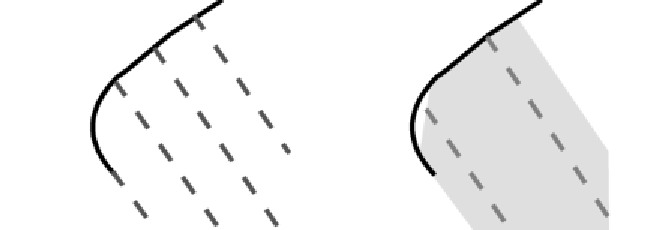Geoscience Reference
In-Depth Information
Figure 8:
on the left: source data, on the right: generalized data; in black a canal, dashed
gray the ditches and light gray the cluster envelope; on the right one of the new ditches
has lost the connection with the canal and as a consequence the canal has a dangling
edge.
Another feature that can be developed in the future is to aggregate ditch
clusters that are spatially close to each other and have similar average
direction: once two of such clusters are found, the new patterns will be
created as a unique pattern, but using the two cluster envelopes. This
would guarantee an even more uniform typification of ditches. The process
could also be extended to more than two ditch clusters, working on clusters
of ditch clusters.
5- Conclusions
In this paper a novel algorithm for the typification of ditches has been pre-
sented. The algorithm is able to identify ditches that are part of a pattern
and those that are not, and to create a new representation for the ditches
that should be typified. The procedure presented is both simple and effec-
tive and is general enough to be applied also to generalization at scale
ranges different from the 1:5000 to 1:25000 for which it has been devel-
oped.
The concept of canvas, as a constrained area inside which to draw freely
new objects, can find application in other contexts.

